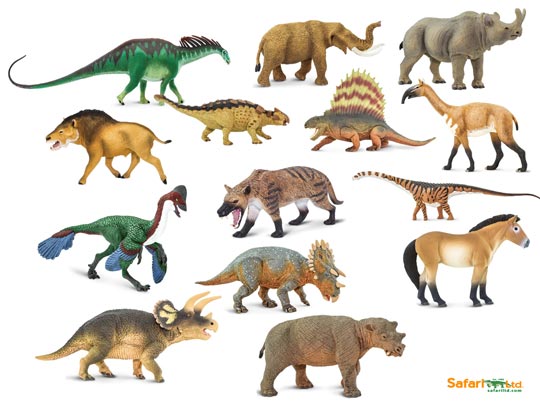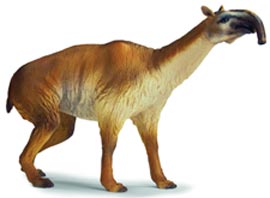A Mention for the Remarkable Macrauchenia
Macrauchenia – A Bizarre South American Hoofed Mammal
The ungulates (hoof-bearing mammals) are very familiar today, they include very well known groups of animals such as deer, pigs, cows and horses, but since they originated in the Palaeocene, plenty of time has elapsed to enable some very unusual forms to evolve.
One such unusual ungulate was the 3-metre-long Macrauchenia, a native of South America. This type of herbivorous camel-like animal is believed to have survived up until about 20,000 years ago. Darwin commented on the finding of some strange fossils, later identified as Macrauchenia; when he explored South America as part of his epic voyage with the British survey ship the Beagle. Darwin thought the fossils were from an ancient Llama, an animal he would have been very familiar with as a result of this extensive travels, but Macrauchenia was a member of a primitive, placental group of mammals called litopterns (Litopterna).
A Macrauchenia Model (Part of the Wild Safari Prehistoric World Model Range)

Macrauchenia, was a nimble quadruped with a short skull and a long camel-like neck. The name means “big Llama”. It lived in large herds and probably migrated across the Argentinian plains following the pattern of the seasonal rainfall.
A Model of the South American Mammal Macrauchenia

Picture credit: Everything Dinosaur
To view models of dinosaurs and other prehistoric creatures includind replicas of South American prehistoric mammals: Safari Ltd. Wild Safari Prehistoric World Models.
Fossils of this large ungulate are associated with the Lujan Formation of Argentina. Palaeontologist think that Macrauchenia possessed a trunk (proboscis); like that of the modern South American tapir. This would have helped these browsers to grab leaves and twigs from the scrub-like vegetation that covered the South American pampas.
Visit the award-winning Everything Dinosaur website: Everything Dinosaur.

